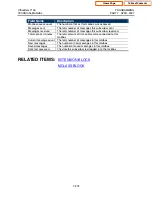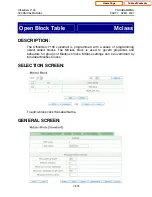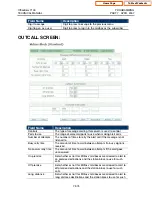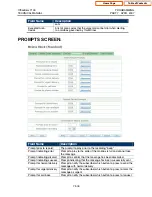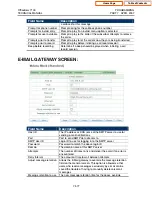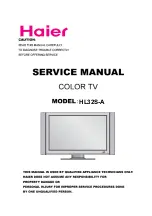
OfficeServ 7100
PROGRAMMING
TECHNICAL MANUAL
PART 8 APRIL 2007
8.1.3
The Call Director is based upon operating mode, which means that Event Pointers can
be set to perform different actions based upon time of day. For example, callers might
only be able to leave a message at night. If no action is set for a particular operating
mode, the settings for the Default operating mode will be used. This greatly eases the
programming time for situations where the same action should take place in all modes.
8.1.4 Event Pointers
Different programming blocks are tied together through a mechanism called the Call
Director. The core of the Call Director is the Event Pointer. Event Pointers are
essentially the conditions that callers are routed by. They tell the system what to do
with the caller or the subscriber when a certain condition occurs. Each Call Director
uses a different set of Event Processors, but the settings for each are the same. Below
is an example of an Event Pointer.
Notice that there are 5 columns to set up the Event Pointer. The first columns is the
name of the Event Pointer, which cannot be changed. The second column is the Action
column. This setting defines the type of action that will be used. The available Action
types are defined below.
Action
Description
GOTO
This means the Event Pointer will send the caller to another block
TRAN
Translate the Event Pointer to another Event Pointer. This is used to have 2
Event Pointers perform the same action without the need to program two
separate pointers.
PASS
Password protect the Event. For example, a Menu might offer an unspoken
single digit option to log directly into a salesperson's mailbox. The
password protection will prompt anyone who presses that digit to enter a
password. If the correct password is not given, the user will be blocked
from accessing the mailbox.
FILE(PTR)
This is an advanced option generally reserved for very long lists of menu
options. It tells the system to open a file and read the Event Pointer
definitions from the file instead of the Call Director.
SRCH
This option is only used in Menu blocks. It is primarily used to allow
wildcard entries in a menu. It will search through Extension or Mailbox
blocks to find a block whose number matches the Event Pointer number.
The Type column is used to select a block type. It references block types by a 3
character abbreviation as shown below.
Abbreviation Block Type
BYE Bye
Block
Home Page
Table of Contents

